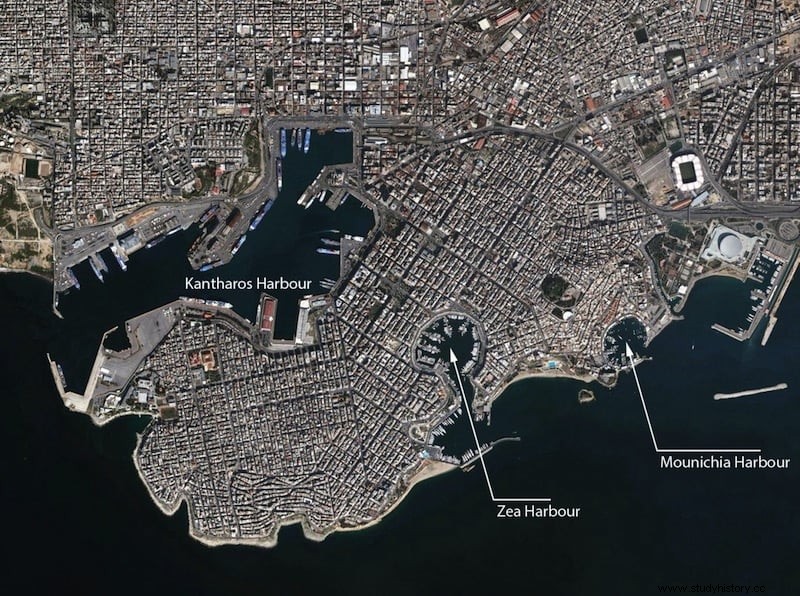Archaeologists from the University of Copenhagen together with Greek researchers discovered in 2016 the remains of the ancient Athenian naval base in Piraeus, built in 493 BC .
At the time it was a technical achievement and was also one of the greatest structures of Antiquity , playing an essential role in the defense of Athens.
Its huge fortifications, docks and shipyards could house hundreds of warships, the famous Greek triremes.

Because the waters of Piraeus are highly polluted, the archaeologists had to wear chemical-resistant suits and masks with positive pressure valves, which completely isolate the divers from contamination from the bottom of the port.
The remains of the structure were found hidden under the waters of the part of the port dedicated to fishing and sports boats, called Mounichia . Once located, six of the sheds or hangars where the Athenians protected their ships from woodworm and inclement weather were excavated.

Only the base of its pillars turned out to be 1.4 meters on a side, and the warehouses themselves must have been between 7 and 8 meters high by 50 meters long , according to the director of the excavations Bjorn Loven.
Carbon analyzes carried out on a piece of wood found at the base of the colonnade allowed the date of the constructions to be dated between 520 and 480 BC.
This means that the ships that were part of the Greek fleet that defeated the Persians at the Battle of Salamis were sheltered there. in 480 BC Which gives even more value to the discovery.

Up to two thirds of the Greek ships participating in the mythical battle came from Athens. The victory was decisive in preventing Xerxes' invasion, although the Greeks were far outnumbered. The Spartans' sacrifice at Thermopylae gave them enough time to organize the fleet and defend the Isthmus of Corinth.
It is estimated that the Greeks had about 370 warships to 1,200 of the Persians. Xerxes' mistake was to enter the straits of the Saronic Gulf, which ultimately made it difficult for him to maneuver and facilitated the Greek attack. Up to 300 Persian ships were captured or sunk during the battle.
